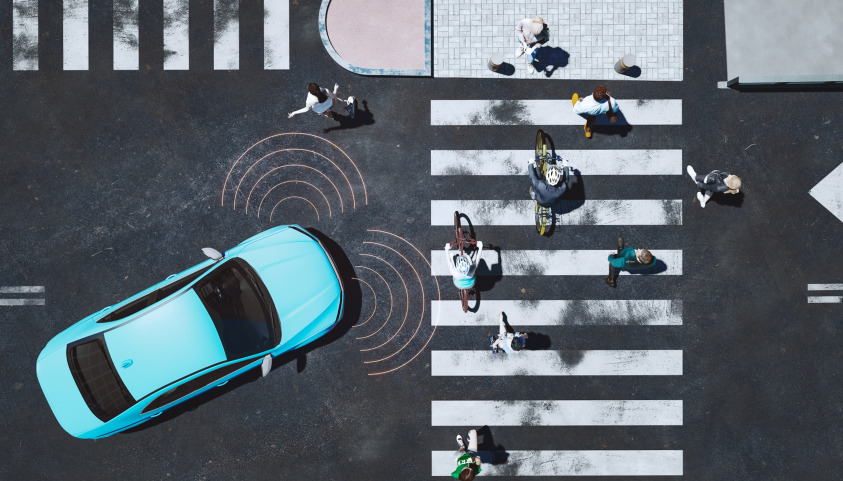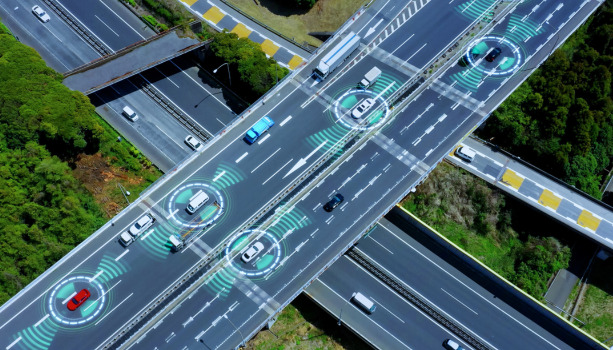The lines between the automotive and tech sector are blurring as we approach the age of software-defined vehicles. Modern day vehicles are much more sophisticated than ever before, where hardware and software are intricately intertwined to achieve superior car performance and user experience. And while improving hardware is not new for OEMs, creating advanced software systems is a much tougher task. Automotive system innovations are causing disruptions in the entire industry, affecting manufacturing processes, product management, policies, and more. However, these disruptions are bringing in an array of new opportunities in the sector and its tangent industries.
B2B auto insurance
The way vehicles operate has changed in the past decade, but the insurance policies surrounding our cars have not evolved at the same rate as the technology. There is still no universal framework that decides who is liable for accidents involving software-defined vehicles (SDVs). Yet, current events in the industry are pointing to a shift of liability from individuals to OEMs, especially when autonomous driving is involved. Auto insurance policies have yet to reflect upon industry developments.
Traditional vehicle insurance policies typically cover physical damages resulting from driver-caused accidents. However, as ADAS and autonomous driving becomes more prevalent, the element of human error will gradually decrease, making traditional insurance policies less relevant. In addition, as software improves and cars become safer, revenue from individual insurance sales will also drop. Losses are expected to reach $25 billion, putting auto insurance providers at a risk of bankruptcy. Nevertheless, industry disruptions are creating new opportunities for auto insurance providers, with a significant portion of these opportunities located in the B2B sector. Between 2020 and 2025, new insurance policy revenues are predicted to reach $81 billion , according to a source.
As long as vehicle performance is directly tied to software performance, OEMs will be held accountable for cyberattacks, bugs, and software malfunctions in SDVs. Since the cost of software-caused accidents can have a colossally negative impact on manufacturers they will be looking for ways to offset the losses. Insurance providers will need to adjust to the changes in the industry and create policies that offer coverage for a new set of potential threats for a smaller pool of larger customers. Key opportunities for new policies include cybersecurity insurance, product liability insurance, and infrastructure insurance for OEMs and governments.
In recent years, cyberattacks have become more common and are projected to cost the automotive industry $505 billion. Due to the growing frequency of malicious cyberattacks, governments are enforcing cybersecurity regulations and pushing OEMs to adopt more stringent cybersecurity measures. Data breaches, hacking break-ins, ransomware attacks, and similar incidents are on the rise, and as the number of SDVs continues to increase, these attacks may soon spread into the automotive industry, leading to various negative consequences. One solution to mitigate these risks is for auto insurance policy providers to analyze the most common cyber threats and offer coverage for a new set of cyber risks. This approach can help companies protect themselves and their customers against the costly repercussions of cyberattacks.
In addition to cyberattack insurance, OEMs will also need to insure themselves against product malfunctions. Software is just as crucial to a car’s function as hardware, and failures in either can have devastating consequences. Fiat Chrysler experienced the effects of software issues firsthand when a pair of cybersecurity researchers uncovered a significant vulnerability in the manufacturer’s Jeep Cherokee. The researchers were able to hack into the car’s internal computer network through its Wi-Fi connection, gaining access not only to the car’s entertainment system but also to its engine, transmission, and brakes. The discovery revealed software shortcomings in multiple Chrysler models and eventually led to a recall of 1.4 million vehicles. As a result, the OEM’s stock value dropped by more than 2%. This case shows that software gaps can lead to catastrophic outcomes that could cost companies millions, if not billions. Therefore, manufacturers will need product liability coverage to offset the high stakes of potential software malfunctions.
Vehicles are not the only things getting smarter nowadays. The infrastructure is becoming increasingly reliant on software. Wireless technologies that allow communication between pedestrians (V2P), vehicles (V2V), and the infrastructure (V2X) are crucial for ensuring safety on the roads. But even the infrastructure is not entirely safe from cyber risk. Higher levels of connectivity can create more pathways for malicious hackers to exploit. Infrastructure software malfunctions can disrupt traffic conditions in entire cities, potentially putting people’s safety in jeopardy. Failures in the infrastructure can negatively impact governments, OEMs, drivers, and pedestrians. Hence, the risks should be insured against with appropriate coverage policies.
Vehicle software development and maintenance
The number of electric and software-defined vehicles is rapidly increasing, causing car manufacturers to shift their focus from hardware to software. Most new vehicles on the road are essentially computers on wheels, and like any computer, vehicle software needs to be properly maintained and periodically updated to improve performance. To keep up with this demand, manufacturers will need to expand their software development departments. However, since software-defined vehicles are a relatively new concept, most OEMs still lack the technological expertise to create and maintain advanced vehicle software technologies.
Creating and continuously managing vehicle software will become more challenging as the number of self-driving vehicles grows. Vehicle software management requires specialized technical expertise and large amounts of computing power, which in turn requires substantial financial resources. To keep up with industry trends manufacturers have developing in-house technological capabilities, hiring new personnel, establishing subsidiaries, and even acquiring other companies. While expanding in-house abilities can be a viable plan, OEMs can also embrace collaboration and seek partnerships with software solutions providers. By delegating software development, maintenance, bug fixes, and management to software suppliers, car manufacturers can focus on their core competencies. At the same time, software suppliers can unlock new revenue streams by entering the automotive sector.
An example of such cross-industry collaboration is the partnership between Mercedes-Benz and Nvidia. The two companies are working on a new software architecture for self-driving vehicles that is expected to add upgradable automated driving functions in the OEM’s vehicles. Unique expertise and know-how shared through cross-industry partnerships will positively affect the supply chain and help push the industry further forward.
Cybersecurity by design
As the SDV market expands, cybersecurity is becoming one of the biggest challenges facing the industry. Regulations hold manufacturers fully responsible for ensuring cybersecurity measures throughout the supply chain, which means that the risks associated with cybersecurity incidents are not just limited to a single player in the market.
To ensure vehicle cybersecurity measures are effective, manufacturers need to take a multi-faceted approach. One of the key areas that needs to be addressed is the protection of in-vehicle systems. These systems, which are responsible for controlling various vehicle functions, need to be secured to prevent unauthorized access and tampering. Additionally, manufacturers need to ensure secure charging for electric vehicles, as well as safe infrastructure communications. Each of these measures requires the development of different solutions and management systems, which can be a complex and time-consuming process.
In addition to implementing security software, companies also have to periodically test and update their security systems to keep up with the evolving threat landscape. OEMs will need the help of cybersecurity experts to put all of the cybersecurity measures in place. This creates new market opportunities for B2B partnerships between manufacturers and cybersecurity providers. Automotive cybersecurity solutions providers can advise manufacturers on the required security systems and deliver the necessary cybersecurity software. Various models of software-as-a-service can be offered to the manufacturers. Cybersecurity solutions providers can take on the task of not only developing the security software, but also managing it and performing periodic checks and improvements.
Disruptions caused by the new trends in the automotive sector are creating opportunities for collaboration with tangent industries. To take full advantage of current market opportunities, the automotive industry will need to embrace the culture of collaboration.
To stay informed and updated on the latest news about AUTOCRYPT and mobility tech, subscribe to AUTOCRYPT’s official newsletter.



